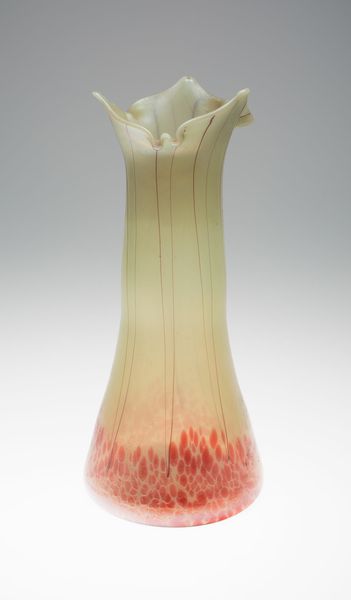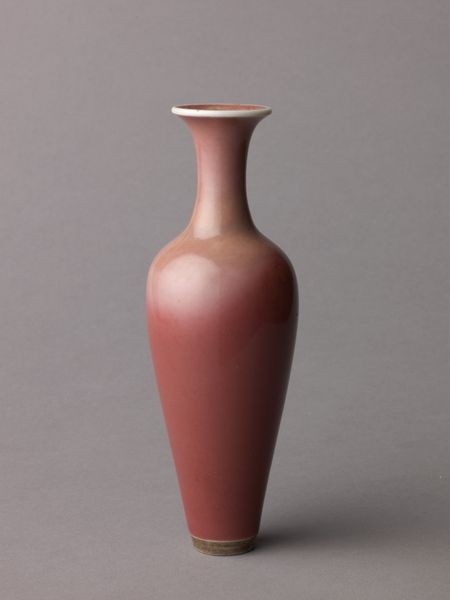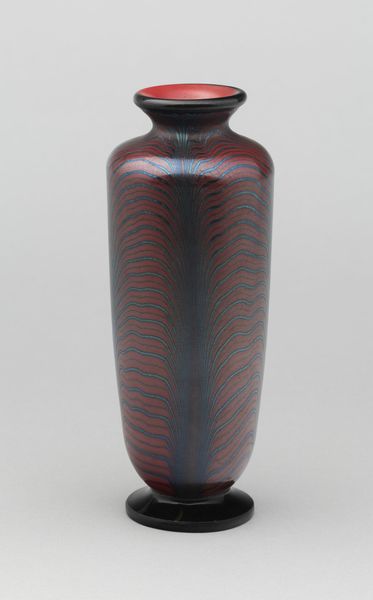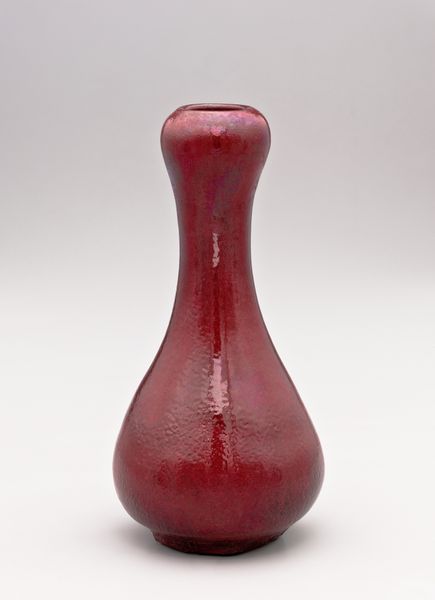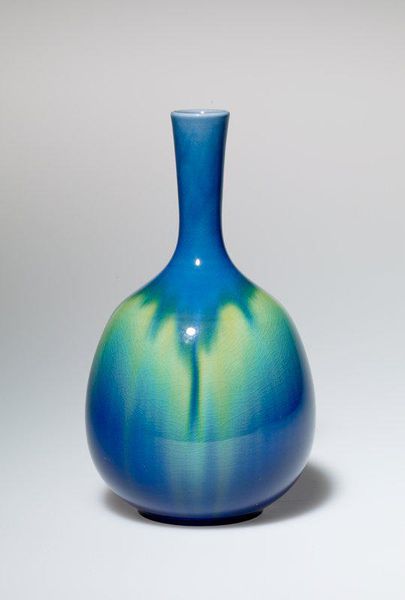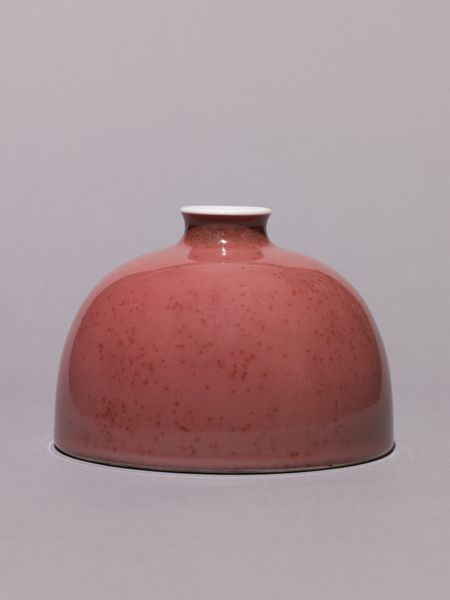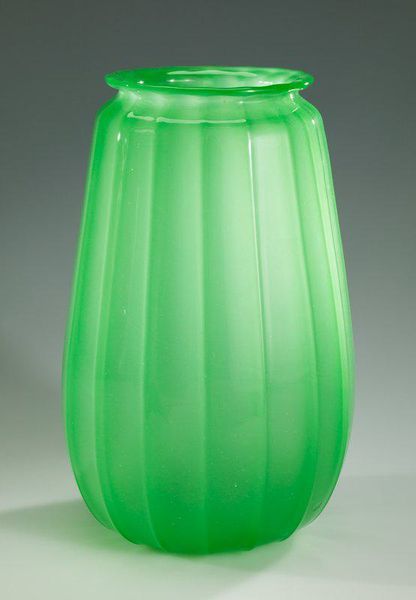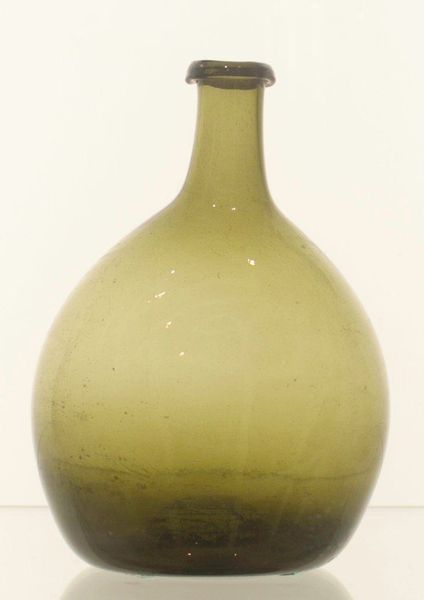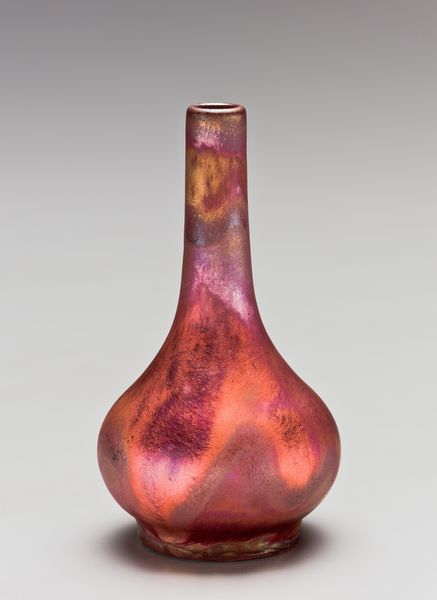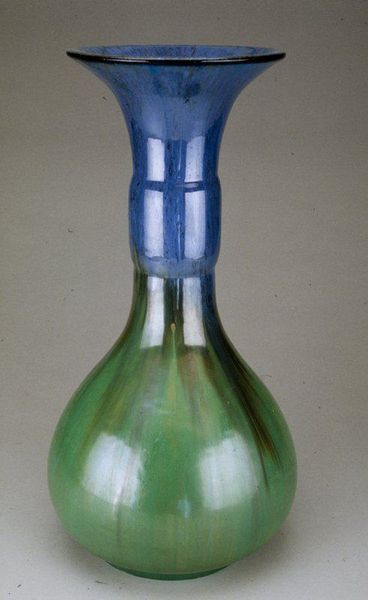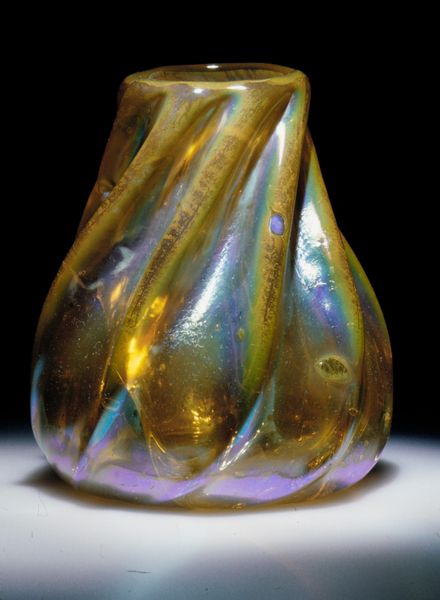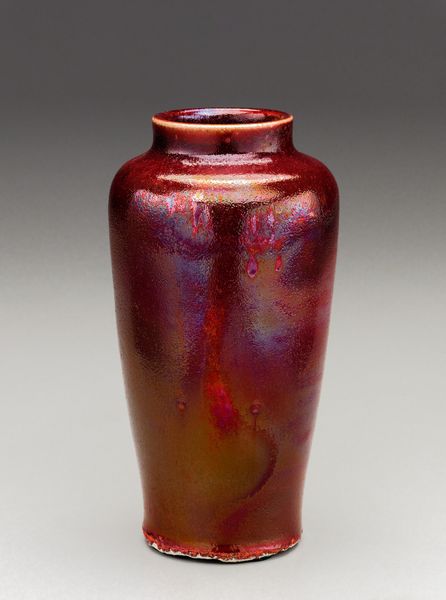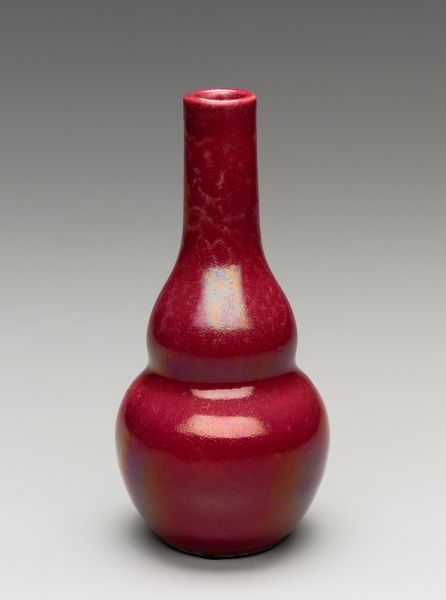
ceramic, glass
#
ceramic
#
glass
#
ceramic
#
decorative-art
Dimensions: H. 7 3/4 in. (19.7 cm); Diam. 3 in. (7.6 cm)
Copyright: Public Domain
Curator: Well, hello there. As you can see, this is an extraordinary vase, dating from around 1886 to 1890. Hobbs, Brockunier and Company were responsible for its production, employing both ceramic and glass materials. It’s currently held in the collection of the Metropolitan Museum of Art. Editor: It's just stunning. The color gradient immediately grabs your attention, going from yellow at the base to this vibrant orange at the top. What was the production process for such a flawless transition of hues in glass and ceramic? Curator: It's all about the glass-blowing and manipulation of color chemistry in the kiln. These types of gradients involved very careful control of temperature and timing. And don’t forget, the broader historical context—the late 19th century was a hotbed of innovation in industrial glass production in America. Editor: Right, because art doesn't exist in a vacuum. Thinking about who this piece was for and how it might have been displayed… Luxury decorative objects like this vase speak to the rising consumer culture of the late 1800s, and were definitely meant for showing off. Curator: Absolutely. These kinds of decorative art pieces were a signifier of taste and class. But more than that, let's not ignore the laborers themselves—the highly skilled artisans that likely labored for extended hours perfecting objects like this "Vase" behind the scenes of this late industrial production age. Editor: Yes, the artisans creating beauty amidst the period’s rapid industrialization and class disparity, even their identities lost over the years. It would be amazing to uncover individual stories connected to the production of such objects. Perhaps there are documents that point us in a new direction on its social setting. Curator: True. This "Vase" presents an interesting tension—mass produced, but clearly hand finished. It's not so easily categorized as solely 'high art' or 'craft' is it? These are false distinctions we maintain. It's history and material, intertwined and inescapable. Editor: Definitely changes how you see something as "simple" as a vase, doesn't it? This opens the door for new appreciation as well. Curator: Indeed, by connecting this gorgeous object to its methods of manufacture we develop an all-encompassing understanding of its legacy.
Comments
No comments
Be the first to comment and join the conversation on the ultimate creative platform.
